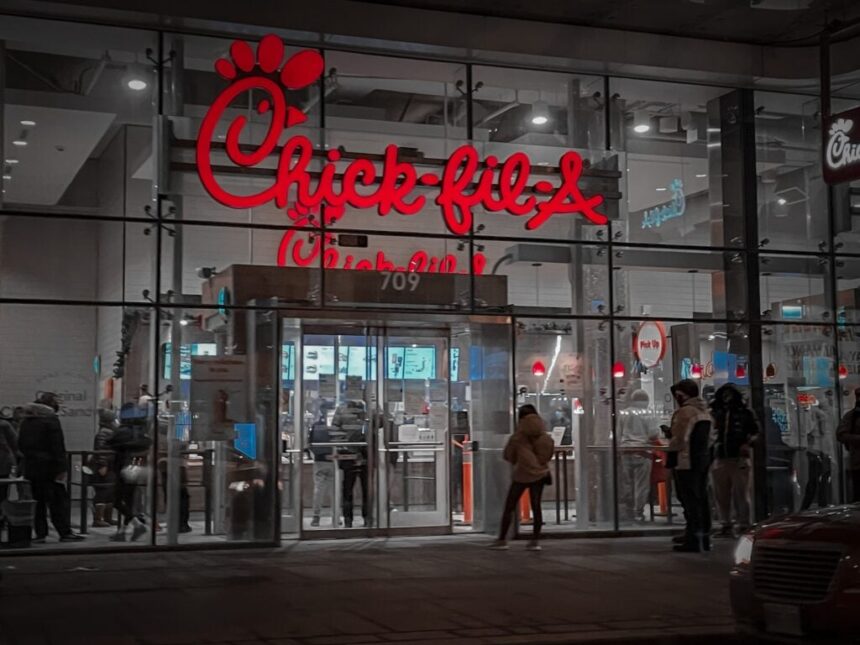One disadvantage that entrepreneurs and “small-time” real estate investors have is that we cannot do anywhere near the amount of market research that large corporations can. Fortunately, that doesn’t mean we can’t respectfully follow their work in order to get a good idea of where the best places to invest will be.
Indeed, it’s readily apparent that large corporations do this to each other, so why shouldn’t we? Have you ever noticed that CVS is always (and I do mean always) located catty-cornered to Walgreens? It seems really odd, especially since they are all but identical pharmacies.
My favorite explanation comes from a Tiger Droppings forum post,
“Walgreens spends all kinds of boatloads of the money and time doing market research and real estate diligence.
CVS just plops down next door.
CVS FTW.”
Okay, we should probably take a random anon on the Internet with a grain of salt. In fact, the actual explanation has more to do with Hotelling’s Model of Spatial Competition, which, as Marques Thomas describes,
“[B]usinesses that sell similar products tend to locate close together to obtain the maximum market share that is possible.
“For example, if a customer from either store is unhappy about the service, pricing, or product range, they can easily walk next door to either CVS or Walgreens and take advantage of their services.”
While this is true, I’m all but certain at least one of them relies on the other’s market research, at least in part, when deciding where to locate their stores.
The Chick-fil-A Method
As noted, picking the right areas to invest is a crucial part of the real estate business. I would go as far as saying that avoiding really tough areas (unless you’re an expert on such areas, of course) is basically a requirement for staying solvent.
Furthermore, I would also recommend always doing your own market research. There are all sorts of free websites, such as City-Data.com, that provide useful information, as well as paid services with even more precise data. Just driving around or talking to locals and seasoned investors can give you a good idea of the quality of an area and in which direction it’s heading. (In fact, I wrote a whole article on this topic).
But, following some large corporation’s market research is a good way to narrow down which areas to look for. (You can go back and verify that neighborhood’s quality after seeing where these companies are locating their new stores). One example of this method is the “Chick-fil-A rule” Greg Cullen uses and discussed on the BiggerPockets podcast. As he describes it:
“So, if there’s something by a Chick-fil-A, I will take advantage of their real estate team and all the research that they’ve done.
“In this area, in the suburbs of Orlando, you had one Chick-fil-A originally. Over the years, there’s grown to be about three Chick-fil-As… I realize I can leverage someone else’s expertise, and their real estate team probably has so much more time than what I do. So if I can latch onto that experience and buy around those areas, it’s going to help me out in the long term.”
Chick-fil-A does have one of, if not the best reputation among fast food restaurant chains and tends to open new locations in thriving and improving areas.
I had a similar “strategy of sorts” when I came out to Kansas City, based around Chipotle. The “Chipotle bump,” we called it.
But then there’s Whole Foods, which BiggerPockets podcast host Rob Abasolo points out is the be-all, end-all of respectfully following the work of corporate market analysts:
“The Whole Foods rule. If you see a Whole Foods go in, it’s like, ‘Oh man.’ Chick-fil-A is pretty good, but if Whole Foods goes in, it’s like that’s a home run.”
As S&P Global notes, “The average household income in a Whole Foods ZIP code was $117,322, 60.4% higher than the average U.S. household income.” So yes, Whole Foods is a very good indicator of wealthy and/or gentrifying neighborhoods.
David Greene sums up the key point here well:
“[If] you’re trying to find an area that’s going to experience above-average growth. A Whole Foods going in, a Chick-fil-A going in, that means that other companies with very smart people have done research that have determined you are more likely to have people moving into this area to support this business. They’re looking at construction, housing starts, demographic patterns. That’s all stuff real estate investors need to be looking into.”
Improving and Gentrifying Neighborhoods
There are other, more direct factors one can look at when it comes to finding up-and-coming neighborhoods. Indeed, just checking your local business journal to see where new developments are taking place is a great step, as is reviewing the economic development plan of the city you live in if they have one.
But indirect indicators such as a new Chick-fil-A or Whole Foods coming in are a better way to determine such trends than one would initially think.
In fact, Eater.com did some empirical research and found similar results. They found, for instance, that in the first stage of gentrifying neighborhoods, the number of cafés dramatically increases. For example, here’s Bushwick, Brooklyn:
Eater.com
In addition, bars and other places that act as “third places” for groups of young, creative professionals increase in neighborhoods that are beginning to gentrify.
In stage two, “the scope and scale of the restaurants in the neighborhood begin to change. Restaurants appear to get larger and more expensive…Wait-service and large-capacity restaurants, for instance, grow during this phase.”
At this point, or perhaps between stages 1 and 2, you would probably see some Chick-fil-As come in. But what’s even more important than a new Chick-fil-A is a new fine dining restaurant that opens in a particular neighborhood. If one of those opens, you can be pretty sure housing prices there are going up.
Stage 3 is where “the neighborhood catches the eyes of even bigger developers—the ones behind chains and big-box stores.” At this point, there is no turning back. For better and worse, that neighborhood will become fully gentrified.
Conclusion
Again, you should never completely outsource your market research to another firm, especially one that doesn’t even know you exist. But following their research is a good guide to start you off in the right direction. After first following a corporate market research team’s work, you can then verify the specifics.
As for which rule to follow, that’s your decision. Whole Foods would probably come in at the last stage of gentrification with the “big-box stores,” so you might actually be a bit behind the curve to go with the “Whole Foods rule.” Perhaps it’s best to play it safe and stick with Greg Cullen’s “Chick-fil-A” rule instead.
Ready to succeed in real estate investing? Create a free BiggerPockets account to learn about investment strategies; ask questions and get answers from our community of +2 million members; connect with investor-friendly agents; and so much more.
Note By BiggerPockets: These are opinions written by the author and do not necessarily represent the opinions of BiggerPockets.








